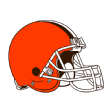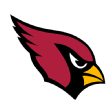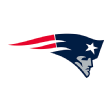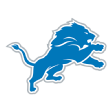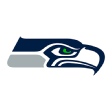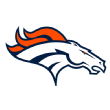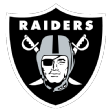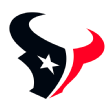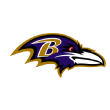Barnwell's 2019 NFL trade deadline grades: Tracking every deal

In the new trade-happy world of professional football, there are plenty of deals to discuss around the NFL trade deadline.
I graded every trade up until the deadline and weighed in on each side of the trades, evaluating the short- and long-term impact.
Jump to grades for a player who was traded:
Jalen Ramsey | Gareon Conley
Mohamed Sanu | Emmanuel Sanders
Michael Bennett | Leonard Williams
Tuesday, Oct. 29
LAR trades CB Aqib Talib to MIA
Los Angeles Rams get: Undisclosed future pick
Miami Dolphins get: Future fifth-round pick, CB Aqib Talib
Rams grade: C
Dolphins grade: C
Raise your hand if you expected the Dolphins to acquire Talib at the trade deadline. Anybody? This is basically a salary dump for the Rams, who save $4.3 million by sending Talib to the tanking Dolphins. It might be more appropriate to consider each grade as an incomplete, given that the Rams will likely want to use the money they've saved elsewhere, while the Dolphins may be able to find another trade partner for Talib.
Miami has no use for Talib, who is on injured reserve and a free agent after the season. The Dolphins are making this trade to essentially buy a fifth-round pick for $4.3 million, plus what will likely be a future seventh-round pick. I'm not sure that's great value given the hit rate of fifth-round selections. Miami could theoretically convert some of Talib's base salary into a roster bonus and then trade him to a team for another selection, but that might be tough to do in such a short window, and it's unclear whether Talib will be healthy enough to play. Either way, it's hard to imagine Talib ever actually suiting up in a Dolphins uniform.
I'm a little surprised that the Rams would choose to trade Talib, given that he would likely start for them at cornerback across from Jalen Ramsey after coming off injured reserve. It doesn't seem likely that the Rams needed to create cash in their own internal budget, given that the Ramsey trade actually saved Los Angeles cash. They also could have created cap space without having to trade Talib. It's likely this deal precedes a coming move for Sean McVay's team.
Monday, Oct. 28
CLE trades DE/LB Genard Avery to PHI
Cleveland Browns get: 2021 undisclosed draft pick
Philadelphia Eagles get: DE/LB Genard Avery
Browns grade:B
Eagles grade: B-
Weeks after trading 2018 second-round pick Austin Corbett, Browns general manager John Dorsey shipped off another member of his debut draft class by sending Avery to Philadelphia. It was a bit of a surprise to see the organization turn so quickly on the Memphis product, who racked up 4.5 sacks and 14 quarterback knockdowns as a rookie. The Browns beefed up their defensive line this year and replaced defensive coordinator Gregg Williams with Steve Wilks, but Avery was a healthy scratch on five occasions and played just five defensive snaps before Monday's trade. The Browns aren't teeming with front-seven talent behind their starters and don't appear to have received much in return for Avery, so this seems like an odd end to his tenure with the organization.
When this trade was initially announced as an undisclosed pick in 2021, I figured we were looking at a seventh-round pick, which would be a nice buy-low opportunity for the Eagles to add a secondary pass rusher to compete with Josh Sweat and Daeshon Hall. In sending a fourth-round pick, though, the Eagles are basically saying that they expect Avery to be on the roster for the remainder of his rookie deal. The Browns didn't trust Avery as a special-teams player, which likely prevents him from suiting up at linebacker if the Eagles feel the same way.
I can see why the Eagles would take a shot on Avery, given that he'll make just $1.7 million in unguaranteed salary over the next two and a half seasons and was reasonably productive as a pass-rusher in a small sample as a rookie. When I thought this was basically Philly taking a flier on an edge rusher, it was an easy win for the Eagles. With a fourth-rounder heading back to Cleveland, it's a fairer swap and might even be a narrow win for the Browns.
NYJ trades DL Leonard Williams to NYG
New York Jets get: 2020 third-round pick, 2021 fifth-round pick (conditional)
New York Giants get: DL Leonard Williams
Jets grade: B
Giants grade: D
After a pair of unimpressive losses on Sunday, the Giants and Jets decided to break with convention and make a rare trade with each other. I can understand why the Jets would make this trade, even if it's a disappointment. This deal is far more curious for the blue side of Jersey.
The 25-year-old Williams has never had the sort of breakout season the Jets hoped to see after taking him as the best player available with the sixth pick of the 2015 draft. Williams' selection crowded a line with Muhammad Wilkerson, Sheldon Richardsonand Damon Harrison, each of whom would eventually leave the Jets before Williams. It's not Williams' fault that the Jets mismanaged their line by letting Harrison leave and signing Wilkerson to a massive contract just before his play slipped, but his legacy within the collapse of that defensive line is complicated.
Williams struggled with consistency, and his highs weren't high enough to satisfy Jets fans who were frustrated with the broader development of the team as a whole. I often talk about the 45% rule, noting that pass-rushers typically turn about 45% of their knockdowns into sacks, and that defensive linemen who grossly overperform or underperform that rate tend to regress toward the mean the following season.
The former USC standout is the most notable exception to that rule. From 2015-18, Williams knocked down opposing passers 85 times, which would typically generate just over 38 sacks. From an interior disruptor, that would put Williams in Geno Atkins territory, as the Bengals star had 39 sacks and 86 knockdowns over that time frame. Williams instead recorded just 17 sacks and has no sacks in five games this season.
Sacks don't tell the full story, especially for a player who spent a fair amount of his time in New York as a five-technique defensive end in various 3-4 looks for the Jets. It's possible Williams could break out while playing as a three-technique and given more opportunities to penetrate into the backfield for the Giants, but Williams was regarded essentially as a can't-miss player in either role coming out of college. The 4-3 vs. 3-4 designation also means less than ever before, given how frequently teams are in their nickel packages.
The Jets could have held onto Williams for the remainder of the season before letting him leave in free agency and picking up a compensatory pick, but that would have required general manager Joe Douglas to mostly sit out of free agency with a roster that is bereft of depth. The Jets have just two players left on their roster who were drafted by the organization before 2016 in guard Brian Winters and wideout Quincy Enunwa. Free agency won't fix their problems by themselves, as 2018 and 2019 have shown, but this is an organization that needs to hit a few singles in free agency while also amassing draft picks.
In making this trade, the Jets are reportedly paying $4 million of Williams's remaining salary, which prorates out to about $7.5 million. They're essentially paying that $4 million for the privilege of locking in a third-round compensatory pick for a player who probably wouldn't get that sort of deal on the open market while retaining the flexibility to go shopping in free agency. The third-rounder will also likely come at the top of the third round in 2020, thanks to the Giants' record as opposed to what would likely have been a selection at the bottom of the fourth round in 2021. While I think Williams could have been a useful long-term player for the Jets, this is a reasonably logical pivot for a 1-6 team with just a 0.4% chance of making it to the playoffs, according to ESPN's Football Power Index.
The Jets also get a fifth-round pick that would become a fourth-rounder if the Giants sign Williams to an extension before the new league year begins in March. Whether the Giants re-sign Williams or not, it's difficult to make sense of this move until you consider the source. Giants general manager Dave Gettleman has actively mocked the idea of positional scarcity, and while building around the line of scrimmage is still a sound way to build a football team, his timing in making this move is close to inexplicable.
Like the Jets, the 2-6 Giants are essentially playing out the string in 2019, as they have a 0.2% chance of making a playoff run, per FPI. Trading for Williams in the final year of his current contract, then, doesn't appear to make any sense. The Jets weren't going to re-sign him, so the Giants could have attempted to sign Williams in free agency this offseason. Gettleman's team will likely be active again in free agency this offseason, but even if they stay quiet, the 2021 compensatory pick they would likely net for Williams wouldn't be anywhere near as valuable as a pick at the top of the third round in 2020, let alone the fourth-rounder.
So the Giants are assuming $3.5 million in salary and giving up two draft picks to essentially get the inside track on signing Williams this offseason? Given the way the defensive tackle market has broken down in recent years, Williams was plausibly looking at a one-year deal. Instead, the Giants have greatly improved Williams' leverage by making this trade; he could end up getting franchised in advance of a multiyear extension after the league year begins.
One of the few places the Giants don't need help is at defensive tackle. Their most frequent defensive look this season has come with two defensive linemen on the field in a 2-4-5 alignment. They've steadily rotated three defensive tackles in B.J. Hill, Dalvin Tomlinsonand rookie first-round pick Dexter Lawrence, each of whom have played more than 50% of the defensive snaps. Olsen Pierrehas also played more than 30% of the snaps.
I suspect I'm overcomplicating things. Gettleman probably liked Williams coming out of USC and saw a chance to acquire a player he evaluated as a star, regardless of position or contractual situation. Gettleman has shown little concern for those variables in years past as he's made his moves. I'm not sure why I would expect him to change now.
At the same time, though, the Giants are just as bereft in terms of depth and recently developed draft picks as the Jets. They're in no position to be trading away third-round picks for what amounts to most favored nation status in contract negotiations, especially if that pick isn't for an edge rusher, a cover linebacker or a free safety. Gettleman continues to mold the Giants in his image. That image is now 7-18 and trying to accelerate the rebuild by facing down the iceberg and jamming on the gas. It's almost impossible to piece together a scenario in which the Giants win this trade.
MIA trades RB Kenyan Drake to ARI
Miami Dolphins get: 2020 sixth-round pick (conditional)
Arizona Cardinals get: RB Kenyan Drake
Dolphins grade: B
Cardinals grade: C-
When the Dolphins left Drake at home for their trip to Pittsburghahead of Monday night's game against the Steelers, it was clear they were trying to keep their backup running back healthy in advance of Tuesday's trade deadline. They needed a trade partner, and they found their match after the Cardinals lost yet another running back to injury.
Trading Drake doesn't impact what is already a lost season for the 0-6 Dolphins. Miami had already mostly moved on from the impending free agent, who played a season-low 41% of the snaps during the Week 7 loss against the Bills. The coaching staff seems to be interested in evaluating Mark Walton, who started and took 14 of the 23 carries Miami split among its backs in Buffalo. This would also likely mean more reps for Kalen Ballage, who has been the most conspicuous member of what has been a comically bad offense for most of the season.
It was clear that the Dolphins didn't intend to re-sign Drake, whose free-agent deal to come will likely depend on how he performs in Arizona. Trading him saves about $1 million and gets Miami a guaranteed pick in next year's draft without having to play the compensatory game and avoid adding pieces in free agency. The Browns made that mistake during their tanking years and missed out on developing the infrastructure around their various quarterbacks, a problem that still bothers Baker Mayfield. The Dolphins should go out and target pieces in free agency to build around the quarterback they take with their top draft pick.
Miami would have taken a 2021 seventh-rounder if it wasn't able to build a market, so getting a pick that could become a 2020 fifth-rounder is a reasonable accomplishment, given that Drake wasn't playing much or well. I would blame his struggles mostly on a dismal offensive line and bad quarterback play, but he's averaging 3.7 yards per carry and has turned just over 40% of his runs into successful plays by ESPN's expected points model. Backs are more susceptible to their offensive surroundings than players at just about any other position -- look at LeSean McCoy's rate stats in Kansas City this season -- but it's difficult to make the case that Drake is a transformative back on 2019 form.
The Cardinals aren't acquiring Drake to transform their offense, to be fair; they're trying to just field a full team after losing several of their weapons to injuries. At running back, Arizona was already down David Johnson, who is also likely to miss Thursday night's game against the 49ers, and then lost Chase Edmonds to a hamstring injury during Sunday's loss to the Saints. The trade for Drake suggests the Cardinals called J.G. Wentworth and turned a future asset into something they can use right now.
Is "now" really all that important for the Cardinals, though? It's hardly as if Drake is expected to swing things on Thursday against an undefeated 49ers team, with San Francisco coming into town as an eight-point favorite. The Cardinals then get 10 days before a trip to play the Buccaneers and a rematch against the 49ers before their bye. It's unclear whether Edmonds or Johnson will be ready for the Bucs, but with two weeks before that game, I'm not sure the Cardinals realistically know whether they'll need Drake to shoulder a heavy workload for that contest.
At 3-4-1 in a division in which the three other teams are a combined 18-5, the Cardinals also aren't really in playoff contention. ESPN's Football Power Index gives the Cards a 0.3% chance of making it to the postseason. The Cardinals need their starting back to be a viable receiver, but every bit of research imaginable suggests running back is about as fungible of a position as there is in football at the moment. They're also going to ask Drake to learn a new scheme and step in immediately, which doesn't bode well against an absolutely suffocating 49ers defense.
The Cardinals, frankly, also aren't in a position where they should be trading away draft picks. General managerSteve Keim's record as a drafter shouldn't inspire confidence; years of subpar drafting have left Arizona with one of the thinnest rosters in the league. The solution to that issue isn't trading draft picks for short-term solutions for a team going nowhere.
The best-case scenario is that Drake excels in Arizona and the Cardinals end up getting a better compensatory pick than the one they send to Miami. They have just over $80 million in cap room and have routinely been active in free agency under Keim, though, suggesting they won't be players in the compensatory market this season. Even if Drake looks like a star, the Cardinals would likely be looking at a fifth-round compensatory selection, which would mean they dealt what would probably be a 2020 fifth-round pick and a $1 million for half a season of Drake and a 2021 fifth-round pick.
With Johnson's $10.2 million base salary for 2020 already guaranteed, Drake's future is somewhere else. As a short-term rental for a team playing for 2021, Drake doesn't make much sense.
Thursday, Oct. 24
NE trades DE Michael Bennett to DAL
New England Patriots get: 2021 seventh-round pick (conditional)
Dallas Cowboys get: DE Michael Bennett
Patriots grade: C
Cowboys grade: A
The writing was on the wall for the short-lived relationship between Bennett and the Patriots, who acquired the pass-rusher from the Eagles in the offseason. Bennett was expected to start as the replacement for Trey Flowers in the Patriots' defense, but with the likes of Jamie Collins and John Simon assuming larger-than-expected roles in a historically impressive defense, Bennett instead spent time as a reserve. After playing just 130 snaps through six games -- including 11 in Week 6 -- Bennett reportedly got into a disagreement with defensive line coach Bret Bielema, after which Bennett was suspended for the Week 7 blowout victory over the Jets.
In the end, it was probably best for everyone involved to move on. The Patriots will save about $2.6 million in base salary and per-game roster bonuses by trading Bennett in what amounts to a salary dump, given that they're only receiving a seventh-round pick in the 2021 draft for him. (The pick can become a sixth-rounder if he or the Cowboys meet as-yet-unspecified triggers.)
Even given that the Patriots have done just fine without Bennett in a starring role, I have to figure the best-case scenario would have been to keep Bennett around as part of New England's inevitable postseason run. He had 2.5 sacks and four knockdowns in limited time this season, but he was coming off a nine-sack, 30-knockdown campaign for the Eagles in 2018. Those numbers are just ahead of what Za'Darius Smith produced for the Ravens a year ago and right behind Yannick Ngakoue's 2018 numbers for the Jags. By sheer pass-rush production, Bennett has been a superstar.
And yet, the Patriots are now the third team to trade him away for what would appear to be pennies on the dollar since the 2018 offseason. There's certainly a huge disconnect between his on-field production and his trade value, and three of the league's most well-regarded organizations -- the Seahawks, Eagles and Patriots -- have now moved on from him across the past 19 months.
For the Cowboys, though, this is absolutely a risk worth taking. They're only on the hook for about $1.8 million in base salary over the remainder of 2019, with $8.25 million in unguaranteed compensation left on his deal in 2020. Dallas ranks 22nd in pressure rate through seven weeks, so adding Bennett offers the defense a much-needed boost behind DeMarcus Lawrence and Robert Quinn.
With Tyrone Crawford now on injured reserve, I suspect you'll see coordinator Rod Marinelli use Bennett on the interior on passing downs to get Dallas' three best pass-rushers on the field at the same time. The Cowboys might also grow tired of Bennett, but the possible reward here greatly outweighs the modest risk.
Tuesday, Oct. 22
DET trades CB Quandre Diggs to SEA
Detroit Lions get: 2020 fifth-round pick
Seattle Seahawks get: S Quandre Diggs, 2021 seventh-round pick
Lions grade: D+
Seahawks grade: B
This is a surprising, out-of-nowhere deal for a Lions team that likely still fancies itself a contender at 2-3-1.Quandre Diggswas starting at safety as recently as this past weekend, when he played 55 of 71 snaps during the Lions' 42-30 loss to the Vikings. Diggs was entering the first season of a three-year, $18.6 million extension he signed in September 2018, but there is no guaranteed money on his contract after this season.
Diggs started his career as a slot cornerback, but the Lions moved him to safety after Tavon Wilson went down injured last season, and he impressed in limited time. They kept Diggs at safety this season after cutting longtime starter Glover Quin, but it seems that they were not impressed by his performance. It might be worth noting that hislast defensive snap with the team came on Kyle Rudolph's touchdown catch in the fourth quarter, and Diggs didn't appear to make much of a tackle attempt on the tight end at the goal line. I have to wonder if that was the last straw for coach Matt Patricia.
The Lions will presumably give Wilson a larger role, given that the former Patriots safety was playing just under 40% of the defensive snaps this season. Wilson filled in for Diggs when the starter missed two games earlier this season; Diggs had basically been an every-down safety to that point. Wilson, who took a pay cut to stay with the team this season, has always profiled better as a true strong safety.
Diggs' theoretical range as either a free safety or a strong safety likely appealed to the Seahawks, who need help at both spots. Both strong safetiesBradley McDougald and Lano Hill have struggled with injuries, and Tedric Thompson has had a wildly inconsistent season at free safety. Seattle started rookie second-rounder Marquise Blair alongside Thompson during Sunday's loss to the Ravens. Blair had played just 12 defensive snaps before taking 100% of the snaps against Baltimore.
After years of wiping away deep passes with superstar safetyEarl Thomas, Seattle has been susceptible to deep throws this season. Against passes traveling 16 or more yards in the air, the Seahawks rank 29th in passer rating (122.3) and 27th in Total QBR (97.7). Lamar Jackson was 2-of-3 for 83 yards on those throws Sunday, and the one incompletion was a would-be touchdown thatMark Andrews dropped.
The Seahawks will try Diggs alongside Thompson for the time being before getting McDougald back. In Pete Carroll, the Seahawks have a coach with an affinity for both challenging pass interference calls and developing defensive backs, which should tell you how great he is at the latter. There's a chance the Seahawks turn Diggs into a very valuable safety in the long-term, and they don't run much risk while adding a warm body in the short-term.
After Detroit paid Diggs $6.5 million in bonuses the past two years, the Seahawks will be on the hook for only about $1.6 million in prorated base salary and $62,500 in per-game roster bonuses over the remainder of the season. That seems well worth a fifth-round pick, let alone getting a seventh-rounder in 2021 as part of the swap. If you think my grade for the Lions is harsh, well, you can ask star Detroit cornerback Darius Slay what he thinks.
DEN trades WR Emmanuel Sanders to SF
Denver Broncos get: 2020 third- and fourth-round picks
San Francisco 49ers get: WR Emmanuel Sanders, 2020 fifth-round pick
Broncos grade: B-
49ers grade: C
It's a run on wide receivers! After the 49ers missed out on Mohamed Sanu this morning, they weren't going to miss out on adding the other prominent veteran wideout on the market. Despite Kyle Shanahan insisting on Monday that the 49ers didn't feel any sense of urgency to add help at wide receiver, it only took a matter of hours after the Sanu trade for the Niners to add Sanders to their roster.
I'm not sure this moves the needle much for the 49ers, who have plenty of competent wideouts without any standout option. I suggested that the Niners pursue A.J. Green, who would have been a clear upgrade on the options Shanahan rolls out each week. Sanders figures to take snaps away from Deebo Samuel and Dante Pettis, and while the 49ers are ticketed for the playoffs after their 6-0 start, getting those young wideouts reps is still going to be what's best for the organization in the long term.
It's also reasonable to ask if Sanders is going to be available to play as the season goes along. Sanders put in an incredible rehab effort to return from the torn Achilles he suffered in December by the start of the season, but he has already missed practice time this year with quadriceps and knee issues, the latter of which knocked him out of a game. He doesn't necessarily need to be a deep threat, but he has caught one pass more than 20 yards downfield this season, and it came in the opener. The 32-year-old played just one full 16-game season across his four previous chances in Denver.
In the best-case scenario, the 49ers get a healthy Sanders as a supplement to their current receiving corps as a savvy veteran wideout. Like Sanu, he is regarded as a good blocker, which will help one of the league's most run-happy teams as they get to the edge. Like the Patriots, Shanahan's scheme asks his wideouts to learn more than the vast majority of NFL teams. The good news is that Sanders has been playing under a similar scheme under Broncos offensive coordinator Rich Scangarello, who worked under Shanahan, which will help give the veteran a head start.
Unlike Sanu, though, the 49ers aren't really getting a financial bargain. Sanders has just over $6 million in prorated salary due over the remainder of 2019. And while the Patriots have the option of paying Sanu a team-friendly salary in 2020, Sanders is a free agent after the year. Combined with the chances that Sanders will miss time during the season, I think you can raise questions about whether this is good value for the 49ers.
The Broncos, meanwhile, bite the bullet and trade another one of the veteran standouts from their Super Bowl-winning team in 2015. Adam Schefter reported that the Broncos wanted Sanders to suit up against the Colts on Sunday before making this trade, which seems bizarre for a 2-5 team with a 3.3% shot of making the postseason, per FPI.
The difference between San Francisco's fourth-round pick and Denver's fifth-round pick should be small given where each sits in the standings, so this is really a third-round pick and the equivalent of a late-round selection for Sanders. That's a fair return for the Broncos, who get to save $6 million and spend the rest of the season evaluating whether they want to add another wideout around DaeSean Hamilton and new No. 1Courtland Sutton, who has had a breakout season. General manager John Elway will likely want to see what he has in Tim Patrick when the 6-foot-4 Utah product is eligible to make his way back from injured reserve in midseason.
ATL trades WR Mohamed Sanu to NE
Atlanta Falcons get: 2020 second-round pick
New England Patriots get: WR Mohamed Sanu
Falcons grade: B+
Patriots grade: C+
There's always some trepidation in suggesting the Patriots didn't get the better end of a deal. Bill Belichick is smarter than, well, just about anyone else in the league. The Patriots are prohibitive favorites to win the Super Bowl, with ESPN's Football Power Index (FPI) giving them a 36.1% chance of winning their third Lombardi trophy in four years. If they do, simply by being on the roster, Sanu is likely to play a big role along the way. The chances of him throwing for a touchdown on a trick play when the Patriots are struggling to create offense at some point during the postseason are approximately 100%.
Belichick has also probably had that pass play drawn up for years. With his affinity for Rutgers products who played under Greg Schiano well-known, it's no surprise Belichick has repeatedly tried to acquire Sanu. Belichick tried to sign the 6-foot-2 wideout when he hit free agency in 2016, only for Sanu to sign with the Falcons. As Adam Schefter noted, Belichick also tried to trade for Sanu before the 2019 draft.
Now, with the Falcons floundering, Belichick gets his man. Sanu should step in quickly for an offense that started Phillip Dorsett and gave the combination of Jakobi Meyers and Gunner Olszewski 54 offensive snaps during Monday night's blowout win over the Jets, although I suspect this move is more about shifting the offense as a whole than trying to create some short-term boost for the Patriots.
As previously constructed, the Patriots' offense simply wasn't playing up to its usual standard. They might very well have seen how they played during the 2018 playoffs, when they relied on a heavy dosage of Sony Michel, and hoped to run a similar sort of offense again throughout 2019. It hasn't happened. The offensive line hasn't been the same without Trent Brown or David Andrews, even before Isaiah Wynn went on injured reserve. The offense sorely misses tight endRob Gronkowski, perhaps more as a blocker than as a receiver. The same is true for fullbackJames Develin. Michel has plodded through a frustrating campaign. The Pats are 22nd in points per drive over the past month despite inheriting the league's fifth-best field position.
They have used three or more wideouts on 62.4% of their snaps this season, which is up from 56.8% a year ago, despite the fact that they're yet to be in a situation where they need to throw to catch up. If New England's options are to run out inferior players in 21 or 22 personnel and wait for Michel to find his footing, or lean more heavily into 11 personnel and Hall of Fame quarterback Tom Brady, well, you can understand why the Patriots would prefer the latter.
Sanu gives Brady another reliable pass-catcher in and around the line of scrimmage. Take a look at Sanu's route chartfrom the NFL Next Gen Stats and you can see that most of what he was running in Atlanta was quick outs and dig routes behind linebackers. He was targeted just four times on passes traveling 15 or more yards downfield. Among 83 qualifying wideouts, Sanu ranks 76th in average air yards per target.
Basically, the Patriots are trading for a second Julian Edelman. While Sanu gives the Patriots added depth if Edelman were to become unavailable, it's likely that Belichick will want to play both Edelman and Sanu in the slot, given that two-thirds of Sanu's targets in 2019 have come out of the slot. Playing them both in the slot means New England will use more three- and four-wideout sets. Sanu is also a sound blocker, which will help the Patriots when they do run out of smaller sets.
Everything the Patriots do is about getting ready for the postseason, of course, and by the time we get to January, this offense could look very different. Wynn should be back at left tackle. First-round receiverN'Keal Harrycould return from injured reserve, which would give the Patriots a bigger body on the outside to either supplement, rotate with or replace the injured Josh Gordon.
At the same time, this is also a move for 2020. Sanu's deal, which was signed before wideout salaries really spiked during the 2018 offseason, pays the eight-year veteran $3.5 million in prorated base salary over the rest of 2019 before a $6.5 million base salary in 2020. That's likely to be cheaper than just about anyone the Patriots would pursue in next year's free-agent market, unless they go after a player coming off of an injury, as they did with Demaryius Thomas a year ago. The option to keep Sanu in 2020 might have led the Patriots to prefer Sanu to someone like Emmanuel Sanders, who is a free agent after the season.
I can understand why the Patriots would make this deal. The Falcons, though, have to be thrilled about this return. They are 1-6 and going nowhere, with a 0.1% chance of turning things around and making it to the postseason, per FPI. A cap-strapped Atlanta team desperately needs to devote more resources to its defense after ignoring it this past offseason. With Sanu playing as the team's third wideout behind Julio Jones and Calvin Ridley, the Falcons can use that $6.5 million more effectively elsewhere. It wouldn't have been shocking if they had cut Sanu after the year or dealt him for a late-round pick.
Instead, the Falcons are getting a second-round pick and saving $3.5 million over the rest of the season. Even given that the Patriots pick could be the final selection of the round, turning a year and a half of Sanu into the 64th pick is good value for general manager Thomas Dimitroff & Co. If the rumors are true and the Patriots offered a second-round pick for Sanu before the draft, it's a bit of a surprise that the Patriots weren't able to drive the price down, given that they'll basically get only 75% of what they would have received before the draft. The Falcons did well to avoid sending a late-round pick in 2021 back to the Patriots as part of the deal.
Patriots fans might be able to justify the deal by pointing out that New England is projected to receive two third-round compensatory picks after losing Trent Brown and Trey Flowers in free agency. Getting those picks is great, but it doesn't make New England's existing picks less valuable. Former Eagles and Browns executive Joe Banner has a nice way of putting it: "Once the house money is in your pocket, it's no longer house money." It's easy to joke that the Pats just use their second-round picks on disappointing defensive backs every year, but New England also used second-rounders on Jimmy Garoppolo, Jamie Collins and Gronkowski in years past.
What Sanu's price tag also suggests is that there's an active market for wide receivers. It's going to be very tough, as an example, for someone to send a second-round pick to the Bengals for A.J. Green when the Patriots needed a second-round pick to get Sanu. The Saints, 49ers, Seahawks, Raiders and Colts could all conceivably be in the market for help at wide receiver in the weeks to come.
Monday, Oct. 21
OAK trades CB Gareon Conley to HOU
Oakland Raiders get: 2020 third-round pick (via Seattle)
Houston Texans get: CB Gareon Conley
Raiders grade: B-
Texans grade: D+
Two coaches who also have a role in personnel decisions responded to Week 7 by making an emotional trade. One side makes more sense than the other, because Bill O'Brien's propensity for filling holes on his roster by trading away future draft picks has quickly become a habit. The Texans technically have two third-round picks, but their own third-rounder is likely spoken for as a product of the Duke Johnson trade, which seems like a similar sort of misstep from the O'Brien-led front office.
Going after Johnson as a secondary piece to supplement then-starter Lamar Miller made sense at first glance, but when the cost was revealed, O'Brien seemed desperate. The Texans sent a fourth-round pick to the Browns for Johnson which would become a third-rounder if Johnson was active for 10 or more games. Unless the Texans cut Johnson in the weeks to come, the receiving back will trigger the third-round pick, which will force the Texans to send the third-rounder they received from the Seahawks in the Jadeveon Clowney trade to the Raiders.
The Johnson deal seemed like a bit of mistaken genius after Miller tore his ACL, but the Texans have mostly built their running game around Carlos Hyde, who was acquired for backup lineman Martinas Rankin just before the Chiefs were going to cut Hyde at the end of camp. O'Brien ended up trading a third-round pick for a running back who has played about half of Houston's offensive snaps while averaging just over eight touches per game. Johnson is an underrated player, but good franchises find backup running backs on the waiver wire or late in drafts.
This brings us to Conley. Jon Gruden likely decided that he was done with the former first-round pick after a disastrous game against the Packers on Sunday. When the Raiders tried to play Cover-0 and send the house on a third-and-4 against a dominant Packers offense, Aaron Rodgers threw a quick out to Marquez Valdes-Scantling. Conley slipped coming out of his break and failed to tackle Valdes-Scantling, who turned upfield for one of the easiest 74-yard touchdowns you'll ever see.
Conley struggled elsewhere during the Packers game and hasn't been good in 2019. As the closest defender in coverage, the NFL's Next Gen Stats suggest the Ohio State product has allowed opposing quarterbacks to go 21-of-29 for 389 yards with five touchdowns against a lone pick this season. That's a 139.7 passer rating. The only cornerback who has been targeted at least 20 times who has given up more yards per attempt than Conley's 13.4 yards per throw is the Chargers' Desmond King.
Gruden and general manager Mike Mayock didn't draft Conley. The Gruden-led front office has continued to dump as many of former general manager Reggie McKenzie's draft picks as possible. After trading Conley, there are just five draft picks across McKenzie's six drafts left on Oakland's active roster in Derek Carr and Gabe Jackson (2014), Karl Joseph and DeAndre Washington (2016), and David Sharpe (2017). Conley seemed to round into form during the second half of 2018 and had a famously impressive game against Antonio Brown, but it's no surprise that the Raiders are moving on from a cornerback they didn't appear to really want.
Getting a third-round pick for Conley has to be considered a victory, given that the Giants were able to get only fourth- and seventh-round picks when they traded away fellow first-rounder Eli Apple under similar circumstances last year. Seattle's pick is likely to come at the bottom of the third round, but so was the fourth-rounder the Giants got for Apple. If anything, Apple had shown more across his first two seasons than Conley did, although most of Apple's success came as a rookie, while Conley was better in his sophomore season.
Either way, the Texans are sending a meaningful pick to try to plug a hole. O'Brien cut 2018 free-agent disaster Aaron Colvin after he struggled during the season-opening loss to the Saints and then moved 2019 free-agent signing Bradley Roby to the slot while promotingsecond-round pickLonnie Johnson Jr. to the starting lineup. Roby played well before going down with a hamstring injury, leading the Texans to start Johnson and street free agent Phillip Gaines ahead of veteran corner Johnathan Joseph, who himself was coming off a hamstring injury. Joseph played only 14 snaps against the Colts on Sunday, while Gaines was carted off with an ankle injury (he was placed on injured reserve Monday). Jacoby Brissett threw for 326 yards and four touchdowns in a 30-23 victory.
In a vacuum, the move to get help at cornerback makes sense. Houston is now perilously thin at cornerback in a year in which it is competing for a playoff berth. Conley is a former first-round pick and still has three cost-controlled years left on his deal, so the Texans might be able to find a starter for years to come. The Texans even play the Raiders this Sunday, so maybe Conley can tip off his new team to some of Oakland's tendencies.
By looking at the bigger picture, though, you can see how one desperate, emotional move begets another. The Texans failed to sign offensive tackleNate Solder in 2018, which eventually led them to inexplicably sign Matt Kalil to play left tackle in 2019. When Houston failed to draft its left tackle of the future in Andre Dillard and Kalil was predictably injured during camp, O'Brien sent two first-round picks to the Dolphins for Laremy Tunsil and Kenny Stills. To help free up the financial space to make that happen, O'Brien agreed to pay half of Clowney's salary to ship him off to the Seahawks for a third-round pick and two linebackers who have barely suited up for the Texans on defense.
Now, after cutting Colvin in frustration after the opener, O'Brien's used the third-rounder from the Clowney deal to acquire a player who has been one of the league's worst cornerbacks this season. Across the first three rounds of the next two NFL drafts, the Texans have just two selections: their second-round pick in 2019 and their third-round pick in 2020.
For whatever issues I might have with the roster-building philosophy in Los Angeles, the Rams have at least used their draft picks to target superstars such as Jalen Ramsey and Brandin Cooks. Tunsil is a star, but shedding draft capital to get players like Stills, Johnson and Conley just doesn't make sense. O'Brien seems to know that he won't be around if this all-in ploy fails and continues to throw future assets toward possible short-term fixes. It's the opposite of just about what every successful franchise in the league does with their roster and their draft picks. Good luck!
Tuesday, Oct. 15
JAX trades Jalen Ramsey to LAR
Los Angeles Rams get: CB Jalen Ramsey
Jacksonville Jaguars get: 2020 first-round pick, 2021 first-round pick, 2021 fourth-round pick
Rams grade: C
Jaguars grade: C+
Trading for Ramsey could transform the Rams' defense. According to ESPN's coverage analysis from the NFL's Next Gen data, the Rams have played some version of a man-to-man concept in their secondary on just 34% of their snaps in 2019, down from 41% in 2018 and 53% in 2017. Ramsey's desire to play in a man scheme and take out the opposing team's No. 1 wideout is well-known. I would suspect that trading for Ramsey will encourage defensive coordinator Wade Phillips to send more pressure and play tight man coverage behind.
Read the full analysis of the trade here.
LAR trades Marcus Peters to BAL
Los Angeles Rams get: LB Kenny Young, 2020 fifth-round pick
Baltimore Ravens get: CB Marcus Peters
Rams grade: C-
Ravens grade: B+
Trading for Peters lets the Ravens take a flier for the rest of the season on a player with an All-Pro ceiling. Baltimore's secondary has been disappointing this season, primarily owing to injuries toJimmy SmithandTavon Young, the latter of whom is out for the year. Peters probably will step in forMaurice Canadyin the short term, and the Ravens will be the ones to net a compensatory pick if they decide to move on from Peters in 2020.
Read the full analysis of the trade here.
CLE trades OL Austin Corbett to LAR
Cleveland Browns get: 2021 fifth-round pick
Los Angeles Rams get: OL Austin Corbett
Browns grade: C-
Rams grade: C+
Corbett is the most significant misfire so far in the John Dorsey era. Taken with the first pick of the second round of the 2018 draft, Corbett was drafted just before more successful linemen like Will Hernandez and Braden Smith, let alone the likes of fellow second-rounders like linebackerDarius Leonard, cornerbackDonte Jacksonand wide receiverCourtland Sutton. Corbett repeatedly failed to take advantage of the opportunities the Browns gave him to win starting jobs, but it's a surprise to see them give up on him for a late-round pick two drafts away before he even finishes his second season on the roster.
The Nevada product played just 15 offensive snaps in a Browns uniform. He might soon have an opportunity to carve out a bigger role with the Rams, who desperately needed offensive line help after Joe Noteboom went down for the year with a torn ACL. Jamil Demby took over for Noteboom during the disastrous game against the 49ers, but the Rams instead started fifth-round pick David Edwards at guard during Sunday's win over the Falcons. Edwards was making his debut on the interior and played well, albeit against the league's worst pass rush.
The Rams clearly see Corbett as a possible buy-low at a long-term position of need for their roster. I agree with their logic, although the fact that the Browns were willing to give up on such a highly drafted player at a position of need after less than a year and a half on the roster is telling. By the time the Browns actually take this pick in 2021, Corbett will either likely be a starter or no longer on the Rams roster.


